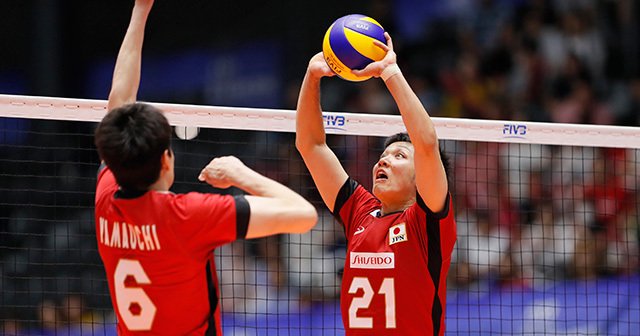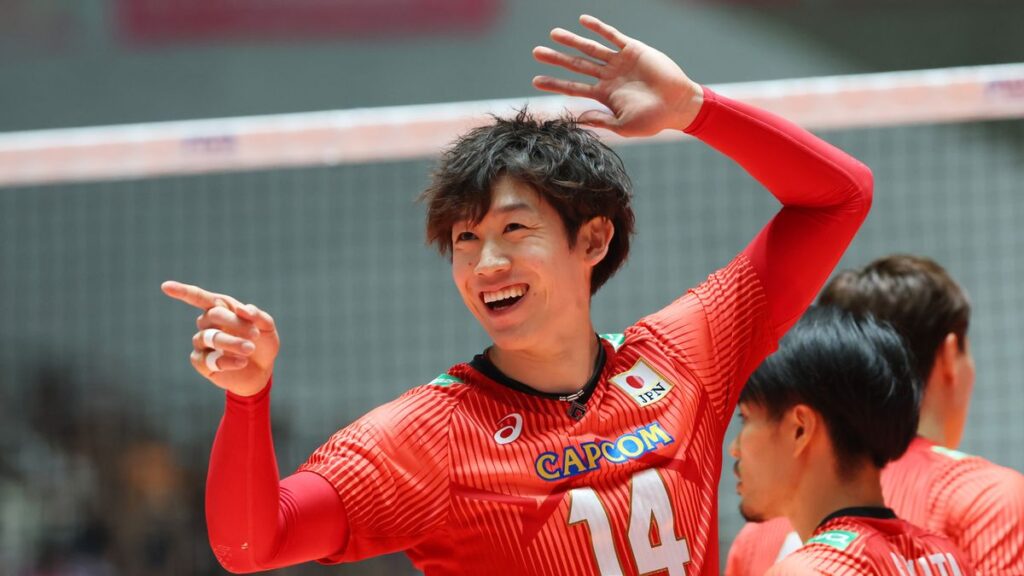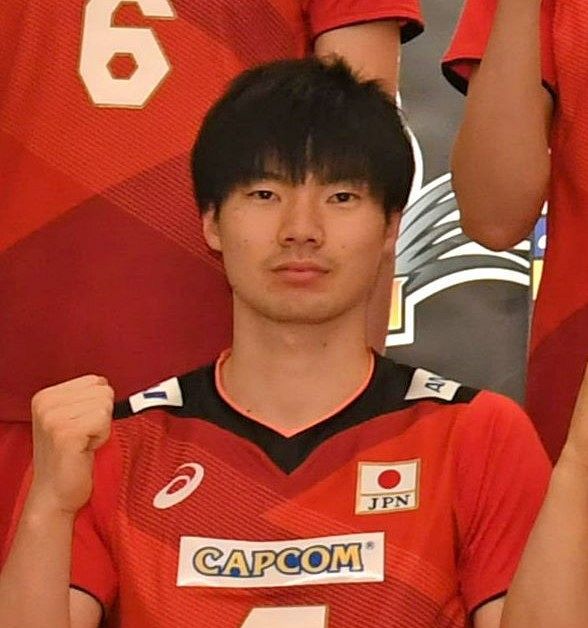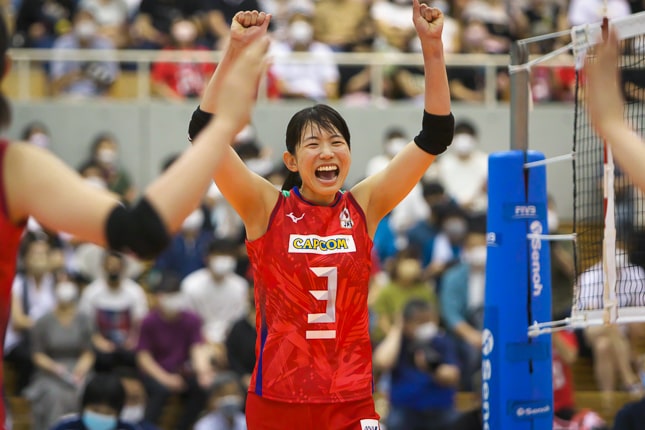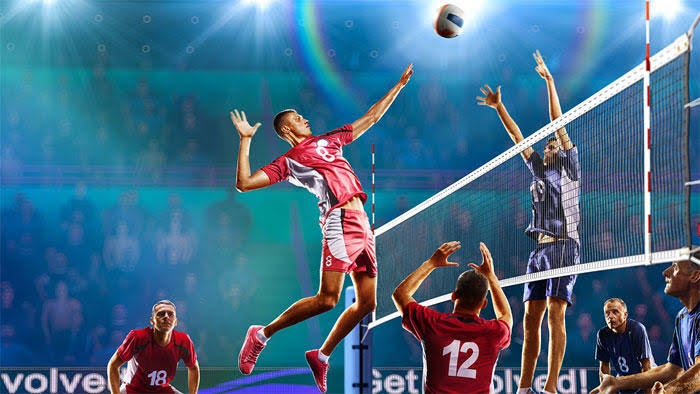
Spiking in volleyball is an important technique for scoring points in a match, but the key to victory is not just hitting hard, but understanding the situation on the opponent’s court.
This article starts with basic spiking techniques and focuses specifically on how to observe your opponent’s court and use that information to make spiking decisions.
Introducing practice methods and tips for beginners to advanced players to hone their spiking skills, and a practical approach that will take readers’ volleyball play to the next level.
目次
- 1 Basics of volleyball spikes
- 2 The importance of the technique of seeing the opponent’s court
- 3 How to be aware of your opponent’s court when practicing spikes
- 4 Specific practice menu and plan
- 5 How to easily get into the habit of looking at your opponent’s court: Look ahead with a direct toss
- 6 How to prepare to watch your opponent’s court during the game
- 7 summary
Basics of volleyball spikes
Spikes are one of the most dynamic and effective attacking tools in volleyball.
This section details the basic knowledge of spiking, proper form, and timing.
Basic knowledge of spikes
Spikes are one of the main ways to score points in volleyball.
This is a technique of powerfully hitting the ball from above the net into the opponent’s court, and effective spikes can greatly influence the flow of the game.
Spikes require high jumping power, accurate timing, and strong striking power, and it is important for players to master these skills.
correct form and timing
-
Form basics
- When performing a spike, you first need a proper run-up. Typically, a 3 or 4 step run-up is used. By stepping in deeply at the end of your run-up, you’ll be able to lift your upper body firmly and make the most of your jumping power.
- Arm swing is important for transmitting strong force to the ball. The key is to swing your arms wide and make a strong snap at the point of impact.
-
How to adjust the timing
- The timing of the spike is largely determined by the toss from the setter. Ideally, you should start jumping just before the ball reaches its highest point and hit the ball just as it starts to descend.
- Adjusting the speed and rhythm of your run-up and being constantly aware of the ball and your position are essential for accurately timing your spike.
To master the art of spiking, it is important to practice these basics thoroughly and to fully adapt them to your body and movements.
Through continuous training and repeated practice, you will be able to step up to more advanced skills.

The importance of the technique of seeing the opponent’s court
In volleyball, it is very important to closely observe the opponent’s court when spiking to perform effective attacks.
By acquiring the skill to see the opponent’s court, you will be able to play more strategically and advance the flow of the match to your advantage.
Benefits of expanding your horizons
Having a wide view of your opponent’s court greatly improves the effectiveness of your spikes.
A wide field of view allows you to quickly grasp your opponent’s position and gaps, and instantly determine where to hit for the most effective shot.
It also makes it easier to find gaps in blocks and defense, increasing the success rate of attacks.
How to read your opponent’s position
There are several points to keep in mind in order to effectively read your opponent’s placement:
-
Observe the quality and type of toss :
- By observing the height, speed, and distance from the net of the toss, you can predict what type of spike the spiker is likely to hit.
-
Check the spiker’s position :
- By looking at the direction in which the spiker’s body is tilted or the timing of the jump, it is possible to predict the direction of the spike that will be hit to some extent.
-
Understand the location and status of friendly blockers :
- Knowing the placement and height of your team’s blocks makes it easier to predict the available courses for opposing spikers.
-
Locate friendly receivers :
- By knowing your team’s defense placement, you can determine which areas to cover and which areas are safe to leave alone.
By being aware of these points, you will be able to read your opponent’s attack patterns faster and more accurately during the game, improving your defensive efficiency.
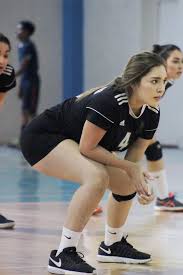
How to be aware of your opponent’s court when practicing spikes
In order to successfully spike a volleyball ball, it is important not only to hit the ball hard, but also to understand the situation on the opponent’s court and hit the ball in the right spot.
Here, we will introduce how to be aware of the opponent’s court when spiking through practical drills and training.
Practical drills and training
-
Visualization drill :
- Before practice, visually separate each area of your opponent’s court so you know which areas are potential targets for attacks. During training, spikes are aimed at areas designated by coaches and teammates.
-
Scenario play :
- Create a real game scenario and reenact it during practice. For example, decide where to spike depending on whether there is one blocker or two blockers. This will help you get used to situations that require you to make quick decisions during a match.
-
Target practice :
- Use practice mats and targets to aim for precise spikes to specific points. This exercise will help you develop accurate hitting points and force.
Coaching points and visual tips
-
How to use gaze :
- When running on spikes or jumping, make sure to look not only at the ball but also at the opponent’s court. Teach the players to move their eyes from the ball to the opponent’s court and back to the ball.
-
positioning :
- Spikers are taught to always be aware of the position of the opponent’s blocker and to aim for the gap between the blocks. It is important to adjust the angle and strength of the spike to match the blocker’s movement.
-
Feedback and adjustments :
- After practice or an actual game, we do video analysis to see which attacks were effective. It also evaluates the extent to which the spiker understands the situation on the opponent’s court and provides feedback on areas for improvement.
These drills and training are very effective in developing techniques for effectively utilizing the opponent’s court when spiking.
By constantly reading the situation on the opponent’s court and making the most appropriate attack, you can greatly improve the success rate of your spikes.
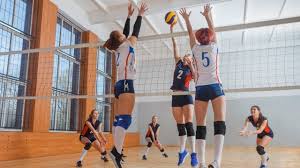
In order to improve your volleyball spiking technique, it is important to take a step-by-step approach from beginner to advanced.
Here, we will propose practice menus tailored to each level and team practice strategies.
Step-by-step practice method from beginner to advanced
-
Exercises for beginners :
- Start by establishing your basic stance and form. In order to remember the basic movements of spikes, practice the basic hitting method using a low net.
- Adjust your foot movements and timing to learn proper jump and swing timing.
-
Practice method for intermediate players :
- Practice at the actual height of the net to develop more advanced batting techniques and power.
- Incorporate practice for getting around blocks and learn how to respond to your opponent’s blocks.
-
Exercises for advanced players :
- Increase your practice of precision target hitting so you can immediately hit the right spike during a match.
- Practice spikes based on your team’s tactics to improve your ability to react in specific playoff or strategic situations.
Team practice strategy
- Combination practice :
- Practice to strengthen the combination of setter and spiker. We work closely with the setter to be able to respond to a variety of tosses.
- Situational training :
- We will practice setting situations that simulate actual matches and develop the ability to respond under different pressures. For example, practice playing under specific conditions, such as set points or situations where a reversal is required.
- Leverage video analytics :
- Analyze real game footage and practice videos to evaluate the movements of individual players and the team as a whole. Based on this, we will adjust the training content and improve each individual’s technique.
Through these practice menus and strategies, you can improve not only the skills of individual players, but also the overall strength of the team.
It is important to practice appropriately according to each player’s level to improve coordination and tactical understanding.

How to easily get into the habit of looking at your opponent’s court: Look ahead with a direct toss
If you can’t see the court or blocker when practicing spiking, try looking ahead each time you make a direct toss.
When practicing, if possible, ask someone to help you, and try to look at the person in front of you each time you make a direct toss.
Then, once you get used to it, have the other person move back and forth, side to side, guess numbers with their fingers, and use gestures.
By doing this training, you should develop the habit of looking at your opponent’s court.
If you are a beginner, try this practice method first.
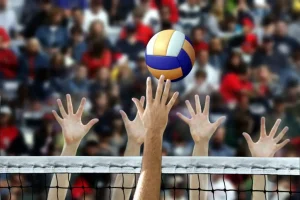
How to prepare to watch your opponent’s court during the game
The key to being mentally prepared to effectively view the opponent’s court during a volleyball match is the ability to remain calm under pressure and the ability to adapt to the situation.
Below, we will explain how to specifically implement these elements.
Tips for staying calm under pressure
-
Make deep breathing a habit :
- When you feel tense or under pressure, taking deep breaths calms your heart rate and creates a state of relaxation. This allows you to make more calm decisions.
-
Establish a relaxation routine :
- A series of pre-game routines will help you maintain your psychological stability. This includes things like stretching, listening to music, and short meditations.
-
Use positive self-reference :
- Try to play with confidence by speaking positive words to yourself. Improving your self-confidence will bring out your best performance even under pressure.
How to improve your adaptability in games
-
Conduct scenario training :
- Set up various game scenarios during practice and train yourself to act accordingly. This allows you to be flexible when unexpected situations arise.
-
Develop observation skills :
- When watching a match, you don’t just watch; you carefully observe the movements of your opponent, especially the behavioral patterns of successful players. This makes it easier to predict the other person’s intentions and next actions.
-
Use feedback :
- Actively seek feedback from coaches and teammates and incorporate it into your own play. Post-game video analysis is also useful, and by watching the actual play, you can understand what could have been improved and what actions were appropriate.
By practicing these mindsets and methods, you will be able to effectively observe your opponent’s court during a match and make appropriate decisions and actions.
As a result, you’ll be able to stay calm in high-pressure situations and maximize your performance in the game.
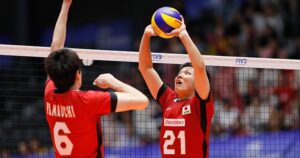
summary
In this article, we focused on “the technique of seeing the opponent’s court,” which is an important element in improving volleyball spiking technique.
From beginners to advanced players, we provided step-by-step practice methods and introduced mindsets and strategies to effectively observe the opponent’s court during games.
-
Spiking Basics : Spiking success depends on correct form and timing. It is important to improve your basic stance, run-up, and batting accuracy.
-
Advantages of widening your field of vision : By seeing a wider area of your opponent’s court, you can quickly grasp the opponent’s position and openings, increasing the success rate of spikes. This is essential to advance the flow of the game in your favor.
-
Practical Drills and Training : Develop your spiking skills in specific situations through visualization drills, scenario play, and target practice.
-
In-game mindset and adaptability : Learning how to remain calm and adapt to situations during a match will help you perform optimally under pressure.
Through this guide, we have provided specific advice and practice methods so that readers can effectively improve their volleyball skills.
It is expected that these techniques and strategies will be incorporated into practice to improve team play and enhance performance in matches.
